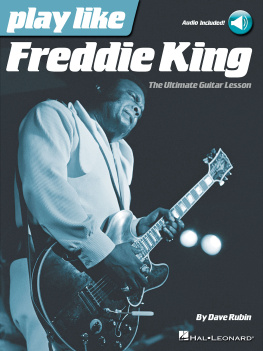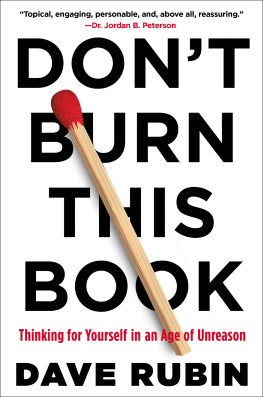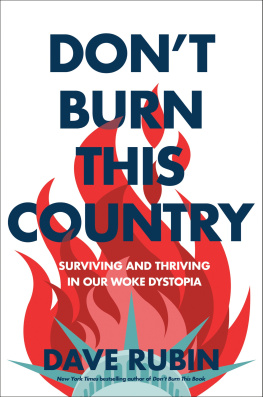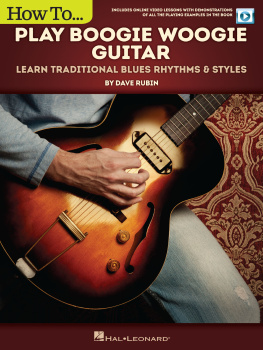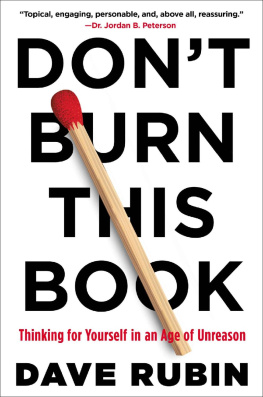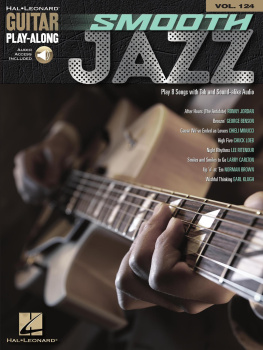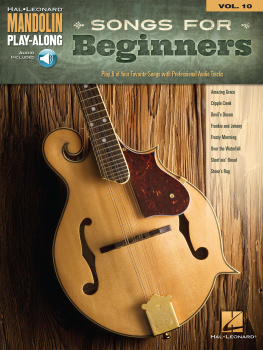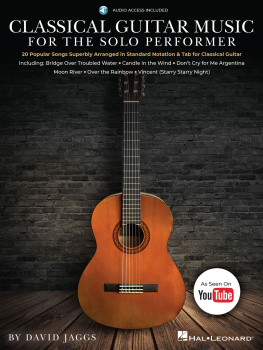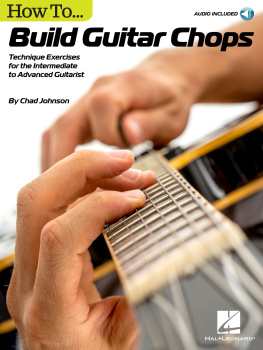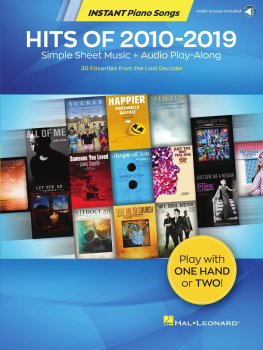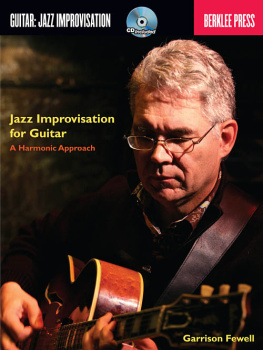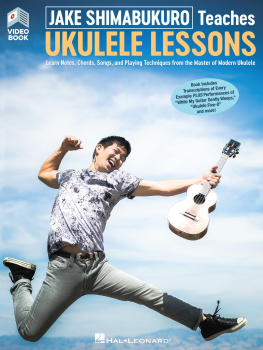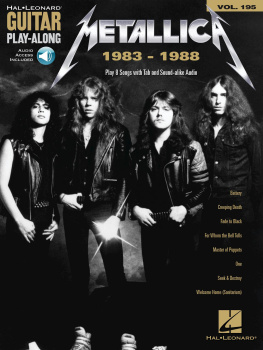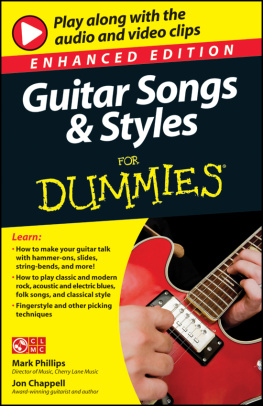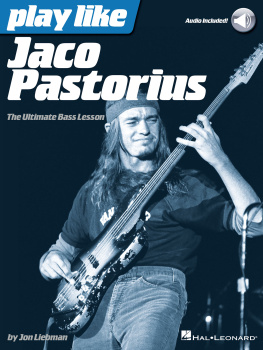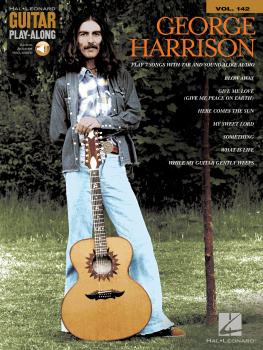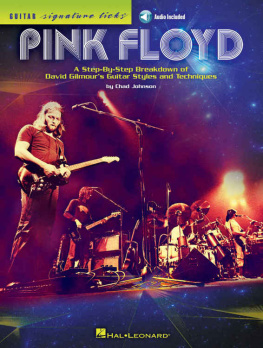
7777 W. Bluemound Rd. P.O. Box 13819 Milwaukee, WI 53213
In Australia Contact:
Hal Leonard Australia Pty. Ltd.
4 Lentara Court
Cheltenham, Victoria, 3192 Australia
For all works contained herein:
Unauthorized copying, arranging, adapting, recording, Internet posting,
public performance, or other distribution of the printed or recorded music
in this publication is an infringement of copyright.
Infringers are liable under the law.
Visit Hal Leonard Online at
www.halleonard.com
Contents
INTRODUCTION
He taught me when to make a stand, when not to show your hand, and most important of all, how to make love to a guitar. Eric Clapton on Freddie King
Unique among the giants of electric bluesand he was a big bear of a manFreddie (originally Freddy) King stood out due to his triple-threat abilities as an expressive singer, creative songwriter, and virtuoso guitarist. The book you now hold in your hands will do nothing to prepare you for the first category, and little for the second. However, this definitive, in-depth look at all the elements and techniques of his guitar style will definitely send you on your way to accurately copping the licks and riffs from a choice selection of the Texas Cannonballs extensive catalog of blues standards. Included are many of his famous instrumentals at which he was unexcelled. King was a bonafide guitar-slinger and, as we travel together along his unique blues highway from Texas to Chicago to Cincinnati and back to Texas, we will make all the important stops for you to acquire the personal guitar chops to stand your ground in any jam session or cutting contest. Hop on board!
The book is organized into several chapters, each focusing on different aspects of Freddies complete guitar picture. Heres a quick rundown of what to expect:
Gear Fit for a Blues King
For all practical purposes, King brandished just two main axes. But, oh baby, what gorgeous tone he squeezed out of them.
Songs
Five complete King classics drawn from the 60s and 70s will be analyzed in detail in a logical, easy-to-understand way, eliminating the mystery but not the mystique.
Essential Licks
Every cool lick that you always wanted to know, but were afraid to ask!
Signature Riffs
King was a blues riff machine with a seemingly endless supply of memorable phrases. Here, we will stop and peruse 11 of his best creations.
Integral Techniques
Embellish or transform your playing with these tough and tender guitar moves.
Stylistic DNA
Find out what makes King so special and different from even his esteemed namesakes and predecessors, B.B. and Albert.
Must Hear
The legendary recordings guaranteed to educate, inspire, and entertainand which belong in every guitar players possession.
Must See
The DVDs, live concerts, and YouTube vids guaranteed to educate, inspire, and amaze.
ABOUT THE AUDIO
The examples that include audio are marked with an audio player throughout the book.
GEAR FIT FOR A BLUES KING
Guitars
As opposed to B.B., who became identified with one iconic style of semi-hollow guitar after caressing a wide variety of Lucilles, and Albert, who made one unique, aggressive-looking solidbody instrument his mistress, Freddie King displayed his love of the blues with two classic Gibson models. The first, and the one played on his earliest King/Federal singles, was a 1954 Les Paul Goldtop with cream-colored P-90 pups and a wraparound combination bridge/stop tailpiece, similar to what Muddy Waters was playing in Chicago at the time. After signing with the Cincinnati-based label in 1960, Freddie released a string of 45 RPM singles that would become future classics, starting in the summer with Have You Ever Loved a Woman b/w Hide Away. Up through Heads Up in the spring of 1961, the recordings clearly sound like the fat bite of the P-90s.
However, starting in mid-summer 1961, the unmistakable out-of-phase Varitone setting of a cherry red 196061
ES-345TDC is clearly audible on Christmas Tears and Let Me Be. A new era in the sumptuous tone of Freddie King had begun with the thinline semi-hollow guitars. Along with the Varitone, the PAF humbuckers provided King with a wider selection of tones from which to choose, especially for the surf instrumentals that he would cut in waves until the mid-60s. The cover of Getting Ready (1971) shows him playing a lesser 1965 model ES-345 with a sustain-sucking trapeze tailpiece.
By the late 60s, Freddie, like B.B., had upgraded to the deluxe ES-355 with ebony fingerboard, multiple binding on the neck and body, block inlays, and gold-plated hardware. A cherry 1967 model, purportedly once belonging to him, sold a few years ago and featured a stop tailpiece, thereby rendering inoperable the Vibrola whammy bar that he never used. The neck pickup was reversed, with the pole pieces facing the bridge pickup. Photos also reveal him with a walnut-finished ES-355. The fancy, richly appointed model would be his instrument of choice for the rest of his too short life.
Amps
Nailing down the amps used by members of Freddie Kings generation is almost always a matter of speculation, as they often played whatever was provided for them in the studio and even on the road. Suffice it to say, they were usually 50s or 60s tube amps that came to be prized for their rich, fat distortion and sustain. Models which have been suggested as ones King abused include a 50-watt tweed Fender Twin (pre-1959), 50s Ampeg Gemini, Gibson GA-40, early-60s Fender 4x10 Concert, Fender Dual Showman, and blackface Fender Super Reverb. The only one positively identified is the Fender Quad Reverb (197279) seen in the many videos from the era and likewise favored by Albert Collins later in his career. Essentially a 100-watt silverface Twin Reverb in a 4x12 cabinet and similar to the Super Six with 6x10 speakers, King seems to have dimed the volume and treble, with the bass, midrange, and reverb rolled off for an overwhelming, searing sound.
Picks
Contributing to the sharp, defined tone throughout his career was his use of a metal index fingerpick, as well as a plastic thumbpick that was suggested by Jimmy Rogers when King ventured to Chicago in the 50s.
Effects
Cmon, get real! This is original, real deal, postwar electric blues straight into the amp, man.
SONGS
Im Tore Down
From Freddie King Sings, 1961
Within six months after signing with Federal Records, King had released 10 singles, with Im Tore Down shuffling hard to #5 on the R&B charts. It has since become a fan and guitar players favorite, resulting in popular covers by Magic Sam and Eric Clapton and is an excellent introduction to his vaunted style. Like virtually his entire extraordinary catalog of classics, it is an excellent tutorial in phrasing and note selection. For reference, the full transcription begins on page 8.
Intro
Though he obviously knew the fingerboard Low Tide to High Rise, he regularly favored the Albert King box, or the upper extension of the minor pentatonic scale, along with the root position of the composite blues scale as heard in the intro of Im Tore Down. The latter scale is a combination of select notes from the blues scale and the Mixolydian mode and was utilized to a degree by T-Bone Walker and substantially popularized by B.B. King.

